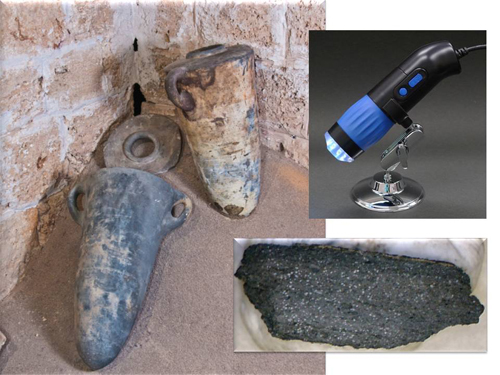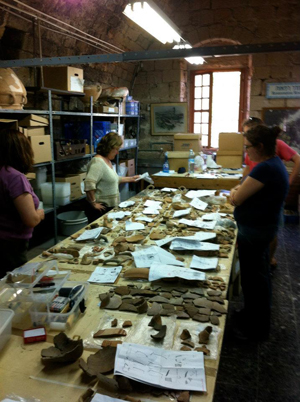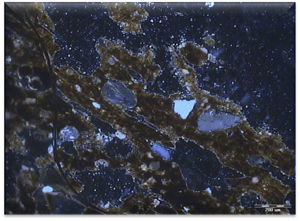Ceramic Fabric and Technology Analysis for Archaeologists
Paula Waiman Barak
Introduction
The ceramic Fabric ANd Technology Analysis for archaeologiSTs (FANTAST) project was launched in 2012. The aim of this project is to produce a detailed, consistent and reliable description of fabrics for large ceramic assemblages. We took the "know your own pottery" approach to establish a unified, easy to use, low-cost and accessible method that will enable researchers and students to describe and classify ceramics. The methods of classification for ceramic fabrics has been long discussed by specialists and several working methods were offered. Some of them derive from geology and were originally used to describe rocks and minerals. Our method is a combination of old well-known methods and new free available technology, adjusted to Tel Dor ceramic assemblages.


This method provides researchers with a tool for systematic description and documentation of fabric types, surface treatments, decoration methods and technological aspects of pottery production. Application of this method for classification of ceramics is an essential addition to the typological analysis and observations regarding surface treatment and decoration, mandatory in every study of ceramics. Using the ceramic FANTAST method also enables a more skillful selection of samples for provenience analyses such as optical mineralogy (petrography) and chemical (XRF, FT-IR or NAA) analyses. Skilled sample selection will benefit your research objectives, save you time and money.
Method description
During the 2012 study season at Tel Dor, the ceramic FANTAST method was tested on the Area B Iron Age ceramic assemblage (ca. 1500 sherds), as part of its pre-publication analysis. Different fabric groups were determined, and large control groups of ceramic were selected for petrographic analysis.

The Team
Prior to the beginning of the project, a day's crash course of the method was given to a team of three undergraduate and one graduate student. Afterwards, under close supervision, the team worked on the area B assemblage, and successfully finished the project in 3 weeks.
Equipment
This project required simple tile cutters for creating fresh brakes as well as optical accessories to view and document the pottery. We used a head magnifying glass (price: $5), to look at the pottery and two megapixel USB cameras ($60) to photograph all the processed sherds. Additionally, a simple zoom stereo-microscope (binocular) was available for more detailed analysis of selected pieces. For teaching, presentation and discussion purposes the microscope was connected to a camera (Olympus SC-20) and a large screen.


Documentation
In order to coordinate the work and to store the collected information we used the Tel Dor Database (MsAccess), as well as free Web-based office suites and data storage service-tools such as Google docs and Dropbox.
Credits
The development of the ceramic FANTAST method as well as all the petrographic analysis for this project have been done by Paula Waiman Barak from the Laboratory of Materials in Archaeology (dir. Prof. Sariel Shalev), University of Haifa (Israel). This project is a part of Paula's Ph.D. dissertation, entitled "Economic Interactions of Phoenicia during the Iron Age I - Iron Age 2a, an Optical Mineralogy Study". The research is conducted at the Department of Archaeology, University of Haifa and supervised by Dr. Ayelet Gilboa (the University of Haifa) and Prof. Yuval Goren (Tel Aviv University).
The Iron Age ceramic assemblage of Area B is been prepared for the final publication by A. Gilboa and E. Bloch-Smith. The work is funded by the White-Levy Program for Archaeological Publications grant.
The 2012 FANTAST team; Elena Margolev, Golan Shalvi, Bronwen Manning, Tanya Sokolsky